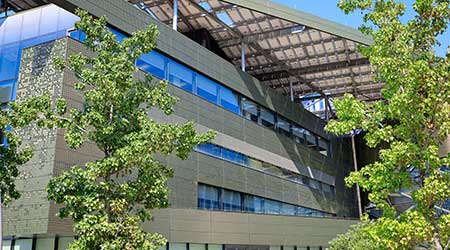U.S. Science Laboratories Cutting Energy Consumption
Science laboratories in the U.S. are cutting energy costs, according to the U.S. Environmental Protection Agency (EPA).
Science laboratories in the U.S. are cutting energy costs, according to the
U.S. Environmental Protection Agency (EPA).
In a joint venture of the EPA and the Department of Energy (DOE) called Laboratories for the 21st Century, or Labs21, some of the biggest laboratory operators in the U.S. are cutting energy consumption and attendant costs.
Many factors, large and small, have contributed to the saving of 533 trillion BTUs, or enough energy to power about 14,500 homes annually. On a square-foot basis, laboratories can consume 10 times the energy of a typical office building.
Labs21 has expanded since its inception in 1999 to include 79 chemical and biological laboratories that occupy 13.7 million square feet. Participating labs are saving up to 30-50 percent on their energy bills compared with those not taking the cure, and the savings add up to a potential $390-$650 million a year.
As the “green labs” concept broadens, new laboratory construction is achieving significant reductions in energy use when compared with older facilities. Under the program, Labs21 partners and two EPA labs have been certified gold in the Leadership for Energy and Environmental Design (LEED) system.
Some of the steps labs are taking to cut down energy costs include:
- Installing energy- and water-efficient equipment.
- Incorporating sustainable design elements into new construction projects.
- Improving operation and maintenance techniques.
- Recovering exhaust heat energy and processing cooling water energy recovery
cogeneration.
- Using geothermal ground source heat pump systems for space heating, air conditioning and water heating.
Related Topics:











